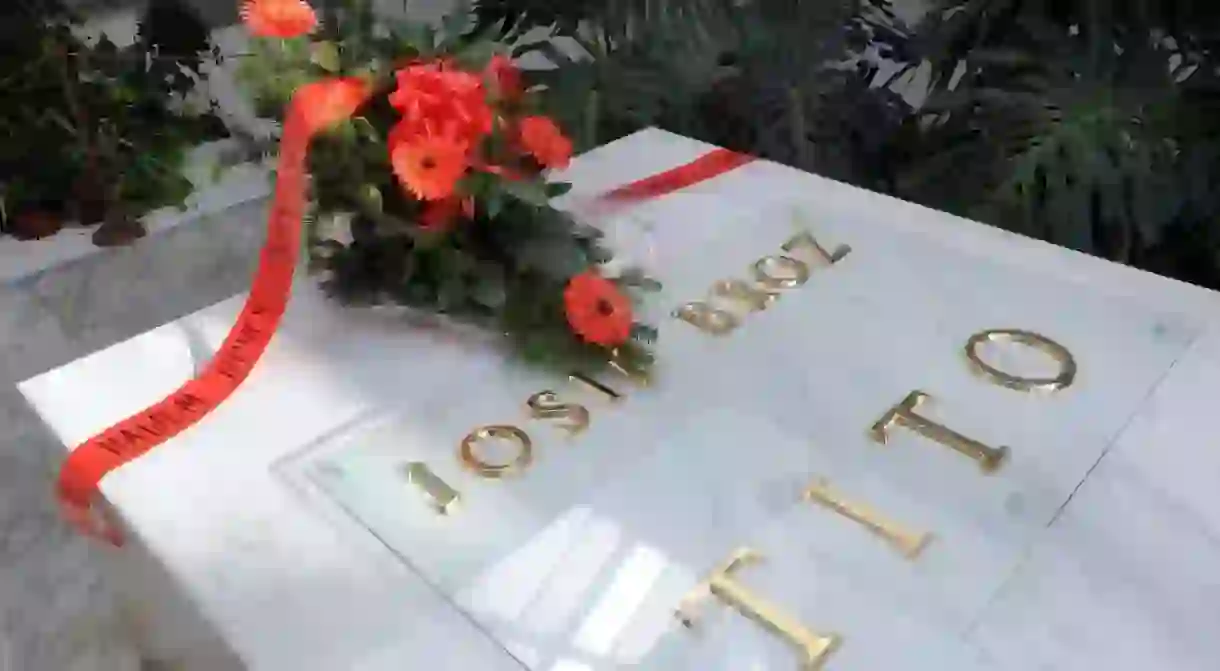The Ultimate History Buff's Guide To Serbia

If you’re hoping to truly understand the Serbs, then best of luck to you. You’ll need to wade through the murky waters of Serbian history, the tragedies and the glories and everything in between. It is definitely possible to enjoy history through tourism however, and these are the best spots from the many centuries of Serbia.
Prehistoric Serbia
We struggle with the concept of ‘prehistory’, as it is difficult to see how anything can come before everything. Existential questions out of the way, it is possible to peek into the prior when in Serbia, as the mighty Đerdap Gorge is home to one of the most incredible archaeological sites on the planet. A site from 9000 (yes, 9000) years ago lies at Lepenski Vir, proof of one of the most advanced civilisations on Earth at the time.

Roman Serbia
The Romans soon came in, albeit a few thousand years after the ruins of Lepenski Vir. The most famous empire in history spent six centuries in these parts, and Serbia actually gave the empire more emperors than any country with the exception of Italy. The most famous was Constantine the Great, who was born in Niš. The town is full of sights and sounds honouring the great leader.
Sremska Mitrovica was one of the four most important towns in the Roman Empire at one time, and as such, is an excellent place to head when looking for examples of Serbia’s Roman past. The highlight is found on the other side of the country however, in Serbia’s wild east. Gamzigrad, known as Felix Romuliana back in the day, is an iconic site of palaces, temples and more. Little is left, but the memories certainly remain.

The Middle Ages
Serbia soon strode out on its own, and a succession of leaders eventually led to the establishment of the Nemanjić Dynasty in the 12th century. Eleven monarchs came out of the house between 1167 and 1371, as Serbia was promoted to a Kingdom (1217). The Serbian Orthodox Church gained independence soon after (1219).
The pride at Serbia’s glory days is clear to see throughout the state, but it is the monasteries that most impress visitors. Studenica, Žiča, Gradac and many more were constructed during these years, and are the best way to engage with Serbia’s medieval glories in a political, cultural and artistic sense.

Ottoman Serbia
All good things come to an end, and Serbia’s glory days were banished with the arrival of the Ottoman Empire in the 14th century. Much of the Serbian national consciousness is inspired by this time, with the 1389 Battle of Kosovo playing a particularly important role. The rest of the nation wasn’t conquered until well over a century later, but 1389 is still seen as the end in many ways. Well, the end of the first chapter at least.
The Ottomans didn’t cover themselves in glory during their rule, and as such, much of the Ottoman heritage was destroyed following the re-establishment of autonomy in the 1860s. Belgrade has just one mosque left, although it does happen to be close to one of the best cafes in Dorćol. Outside of a couple of tombs, Belgrade’s Ottoman past is forgotten.
Novi Pazar is the Serbian town with the largest Muslim population, and it remains the best place to go for those in search of Serbia’s Turkish influence. Niš once again raises its head above all as a historical destination, and its Skull Tower remains the nation’s most enduring monument to many difficult centuries.

Habsburg Serbia
The Habsburg Empire ruled much of the north while the Ottomans were ransacking the south, and that influence can be seen and felt in the gorgeous little towns of Vojvodina. Novi Sad is the most obvious example, but Sremski Karlovci is undoubtedly the most delightful small town in all of Serbia.

Communist Serbia
Communism reigned over Yugoslavia and Serbia for less than half a century, but the recent nature of its tenure means its impact is still felt today. New Belgrade may well be the ideology’s lasting legacy in the capital, a monolithic collection of blocks that house more people than anywhere else in the city, all the while hiding some of the best restaurants and bars in Belgrade. On the other side of the river, Josip Broz Tito is buried in the House of Flowers, a must visit for any Yugostalgic travellers out there.
But it is the awe-inspiring monuments dotted around the country that hark back to the power of Tito and his time in charge. The monoliths range from huge to small and from pristine to entirely neglected, but every single one tells a different story of sacrifice and commitment. Regardless of your opinion on the ideology behind them, the power of the human spirit is still alive in these spomeniks.

1999
It is a subject matter that is best left off the table when in Serbia, but the NATO aggression of 1999 still rankles from Novi Sad down to Niš. In Belgrade, numerous buildings still stand as tangled wreckage following the 78 day bombing campaign that killed over 500 innocent civilians.














